Funeral processions in Victorian and Edwardian England
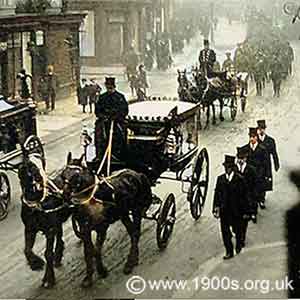
Funeral processions in Victorian and Edwardian England were much more elaborate and sombre than today. The author of this page uses personal recollections to describe and comment on the start of the funeral procession, the funeral bier, the hearse, the tolling of the church bell, how respect was shown by neighbours and undertakers and the form and style of the procession.
____
Extracted from the memoirs of the webmaster's mother (1906-2002) and edited by the webmaster with further research
The start of a funeral procession
When I was a child in the early 1900s, funeral processions for ordinary people started from the house where the body had lain in the parlour, washed and laid out for friends, colleagues and family to view to pay their respects.
The road looked very sombre indeed for the funeral procession. This was because the entire road would close their venetian blinds as a mark of respect. (The family and close neighbours would have closed theirs on the day of the death.) Also no children were allowed to play outside.
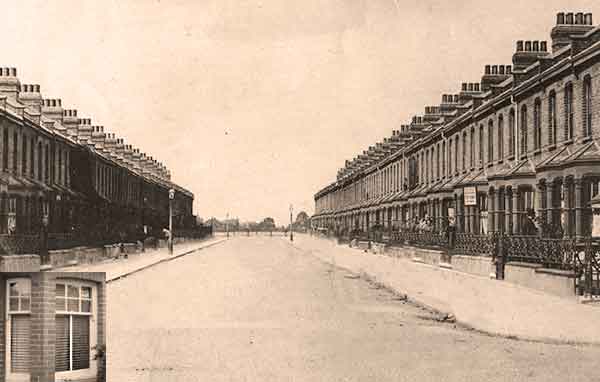
Road on the day of a funeral - no children playing and Venetian blinds closed.
The funeral bier
The coffin was taken out of the house on what was called a funeral bier. This was a stand of a size and shape to take a coffin, with straps to secure the coffin.
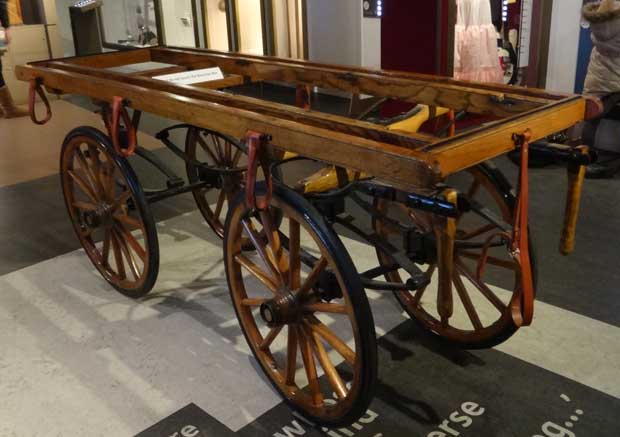
Victorian or Edwardian funeral bier photographed in The Lightbox, Woking.
The photo shows wheels to transport the bier, although it was generally considered more elegant for it to be carried out slowly by what were known as pallbearers, bearing the weight on their shoulders.
There was an arrangement on the bier whereby the coffin could easily and elegantly be slid onto and off the waiting hearse.
The hearse
The hearse was a horse-drawn carriage with glass sides which showed the coffin through. It was always black and elegantly and tastefully decorated.
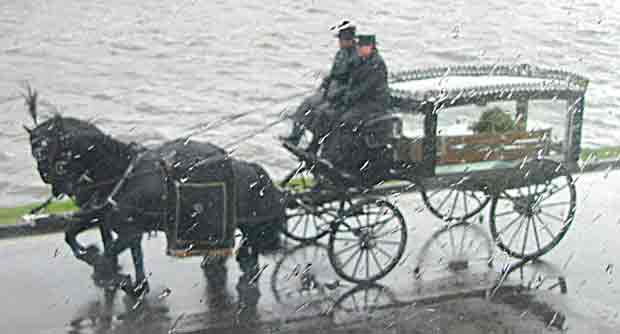
Victorian or Edwardian hearse, transporting a coffin on its final journey. Photo courtesy of Rosemary Hampton. Although taken through glass on a rainy day, it is accurate in all its details.
The tolling of the church bell
Just before the funeral procession left the house, the church bell started to toll. As there was no traffic noise to speak of, it really added to the sombreness of the occasion.
The respect shown by the undertaker and his assistants
The undertaker and his assistants would be dressed in black with black top hats, but as the hearse left the house, they would take off their top hats and walk bare-headed, looking neither to the right nor the left. They walked like this at a dignified pace behind the hearse to the end of the road. Then they would take their seats and the horses would be allowed to break into a trot.
In more elaborate funerals, the undertaker, his men and other male mourners dressed in black with top hats would remain walking, both beside and in front of the hearse.
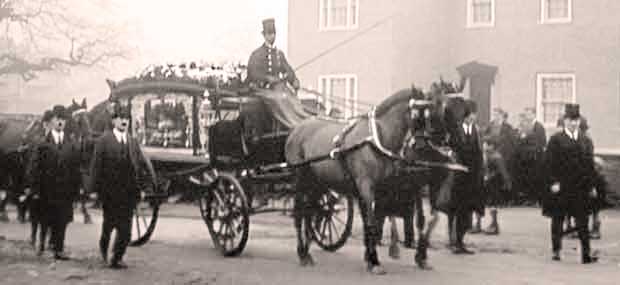
Mourners in black with top hats walking in front and beside the hearse
The form and style of the procession
There was quite a bit of pomp with some funeral processions. The horses would have black velvet covers on their backs, similar to those worn by racehorses. Then over their ears they had black plumes about 6 inches long [about 150 mm] which bobbed up and down as they trotted along.
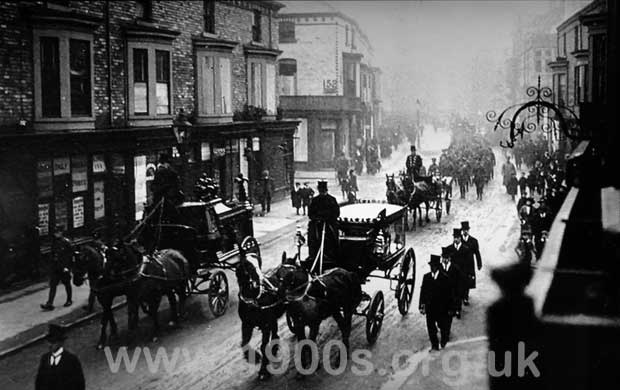
An elaborate funeral. Note the large number of mourners following behind.
Other horse-drawn carriages followed behind the hearse, with the closest family's carriage leading. These carriages held four to six people.
An undertaker's recollection of an Edwardian funeral
When old Francis died in 1913, Dad sent him off in a hearse pulled by four black horses followed by mutes* carrying ostrich feather wands and a procession of friends and family in the deepest mourning possible. You used to see so many flowers at funerals before the Great War. But, then, and for what seemed like years afterwards, there were so many dead there weren't enough flowers in the world for all of them.
from 'Last Rights' by Barbara Nadel
* A mute's job was to stand vigil outside the door of the deceased, then accompany the coffin, wearing dark clothes, looking solemn and often carrying a wand of some sort. He was a paid mourner.
If you can add anything to this page or provide a photo, I would be pleased if you would contact me.
Text and images are copyright
sources: early 20th century material
sources: ww2 home front and other material
contact
the webmaster/author/researcher/editor
privacy policy

